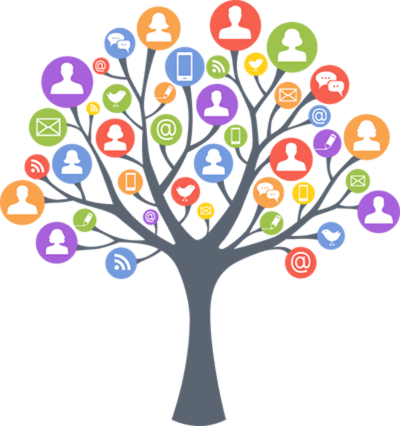Blog and News > sales > Understanding your Digital Touchpoints
Understanding your Digital Touchpoints
Where does the sales cycle truly begin? Is it when a prospective buyer has called in to enquire? The first email your sales team has sent? Or is it built up over time with the various interactions and experiences with your brand, even online? Here we’ve taken a look at the opportunities that “digital touchpoints” provide businesses to leave impressions on their market, ultimately leading to a fuller sales funnel.

What is a digital Touchpoint:
A touchpoint can be defined as any way a buyer interacts with a business, whether it be person-to-person, through a website, or any form of communication. When buyers interact with a business, it gives them an opportunity to compare their prior perceptions of the business and form an opinion.
Use in everyday business communications:
When a customer decides to purchase a product / service, the sales people are one of many touch points that are in use to bridge the communication gap between company and customer.
The Brand Touchpoint Wheel:

The Brand Touchpoint Wheel displays the various ways in which consumers interact with an organisation’s brand, creating higher brand education (or presence). Brand touchpoint segments can be split into pre-purchase, purchase experience and post-purchase experience; and these all help influence a buyer’s purchasing decision.
“Purchase Experience” is the point in the buying process that converts the prospective customer into actually buying if they see the benefits are great enough.
The Brand Touchpoint Wheel demonstrates that the sales force is a large contributor in this experience, as it leaves the buyer feeling either satisfied or dissatisfied with the process.
A sales person also has the ability to impart knowledge and provide crucial brand experience. It is another form of marketing that can drastically improve the brand perception when done right.
Importance of Content:
Providing quality content on your website / blog to be shared across digital channels offers ample opportunity for community engagement, whilst improving the perception of your brand.
You can create content yourself, or use tools such as Passle to purely help share content relevant as they explain below:
“Passle makes it easy for the experts in your organisation to create relevant, timely content. This content sits on your website with your own branding. It has great sharing tools and delivers fun feedback for the authors to keep them engaged. By creating a vibrant community around your content, we can ensure that you become the go-to firm in your field.”
At CANDDi, Passle helps our Sales and Consulting teams become “go to” contacts within our field and an expert to whom our web visitors can contact and gain experience from. It enables your Sales team to get involved in current issues relevant to your market.
By engaging with your own clients content it can help increase your expertise and it is seen by your future prospects
Social Media Use:
Social media and the Internet have produced new technology based communication channels, known as digital platforms. Digital platforms have played a major role in the communication abilities between a company and its prospective buyers.
Research shows the most frequently used social media touch-points are Twitter at 9%, Facebook at 94% and LinkedIn at 83%. All touch points on social media have a high level of interaction and communication between the company and the consumer, through the ability to post and respond directly to comments.
92% of companies have created a Facebook page, and companies that create multiple posts of both information and promotional material maintain a high interaction with their consumers.
Through social media,, the opportunity for a two-way conversation with potential buyers enables a company to gain customer feedback instantly and monitor customer satisfaction. This two-way interaction is becoming a co-creative process where buyers are encouraged to relay feedback of their preferences and experiences of a brand.
However, a relatively inactive company when it comes to social media is limited to customer generated content - which can go both ways… social media is great for networking and building buzz around a product or service, but negative comments can turn consumers against a product or brand.
In a recent study, ‘84 percent of millennials reported that they “didn’t like” advertising and trusted their closest friends nearly twice as much as sales messages’ (Instead Articles, 2015).
With regards to Facebook, be weary of this medium as it is not always suitable for every business. B2C is more suited to Facebook whereas B2B is much more suited to LinkedIn. Twitter is rather neutral and can be used across both.
One thing to remember is to keep engaged and prevalent within the channels suited to your market. As important as face-to-face / phone time is in pulling prospects over the line, the sales cycle begins way before in much more subtle interactions. Finding your channels and nurturing digitally offers the opportunity to build a trusted, open buyer/seller relationship.